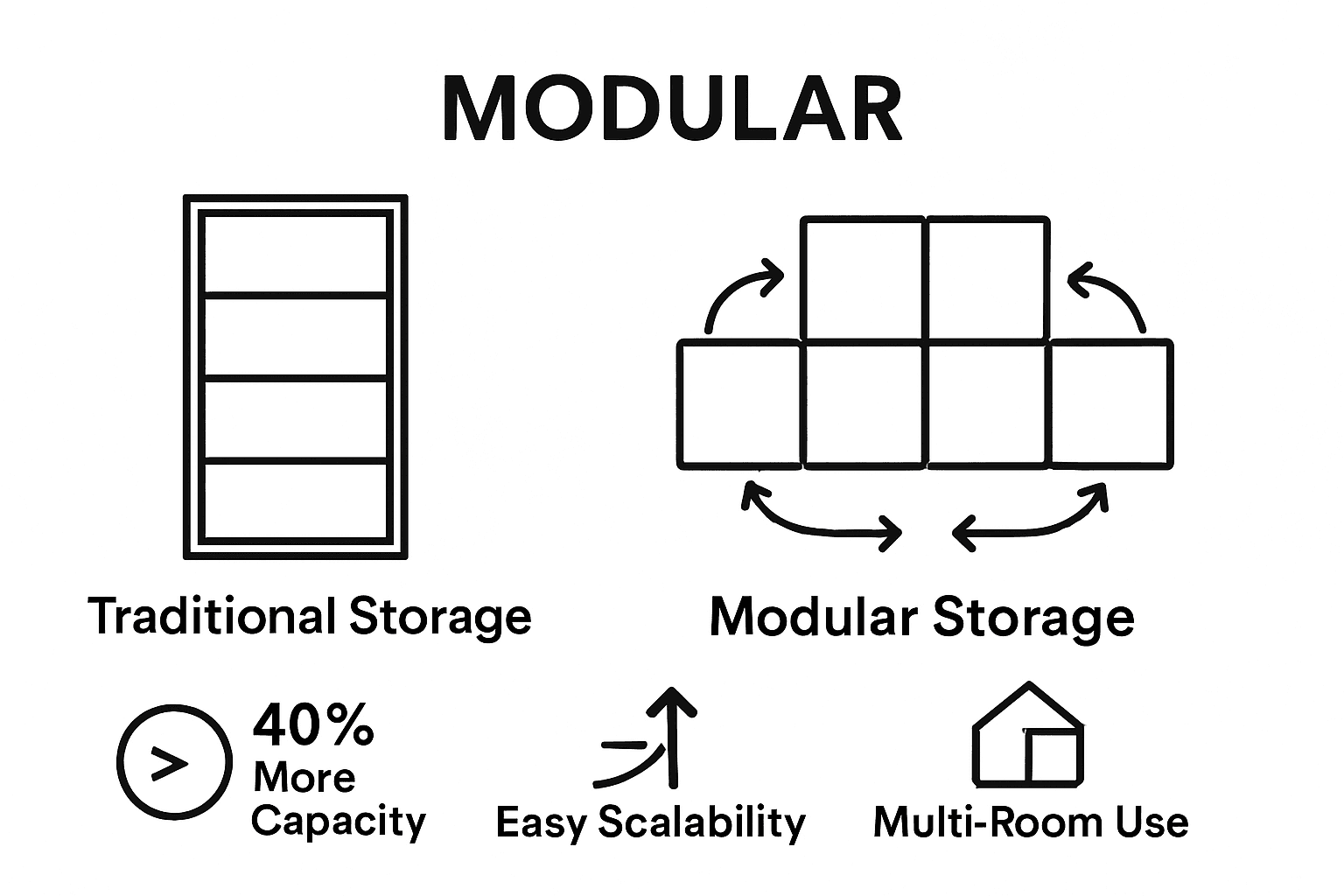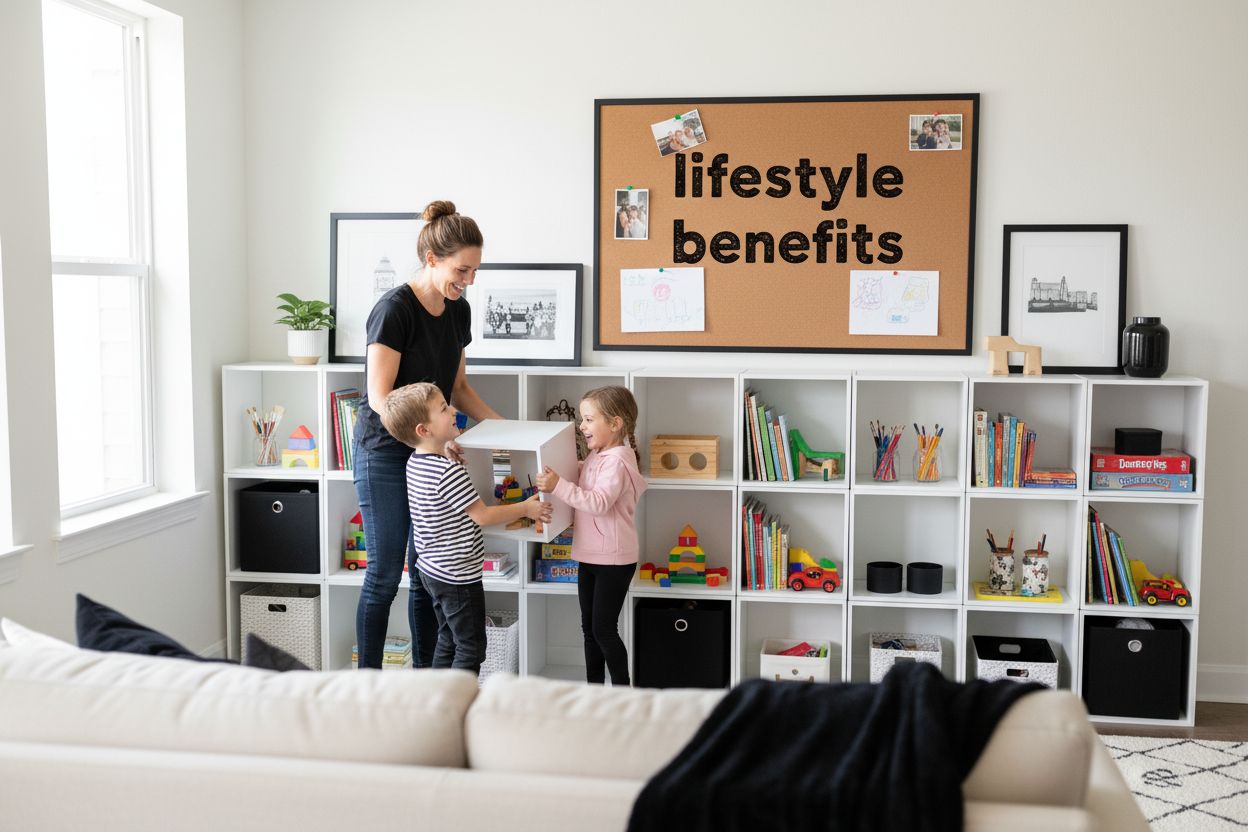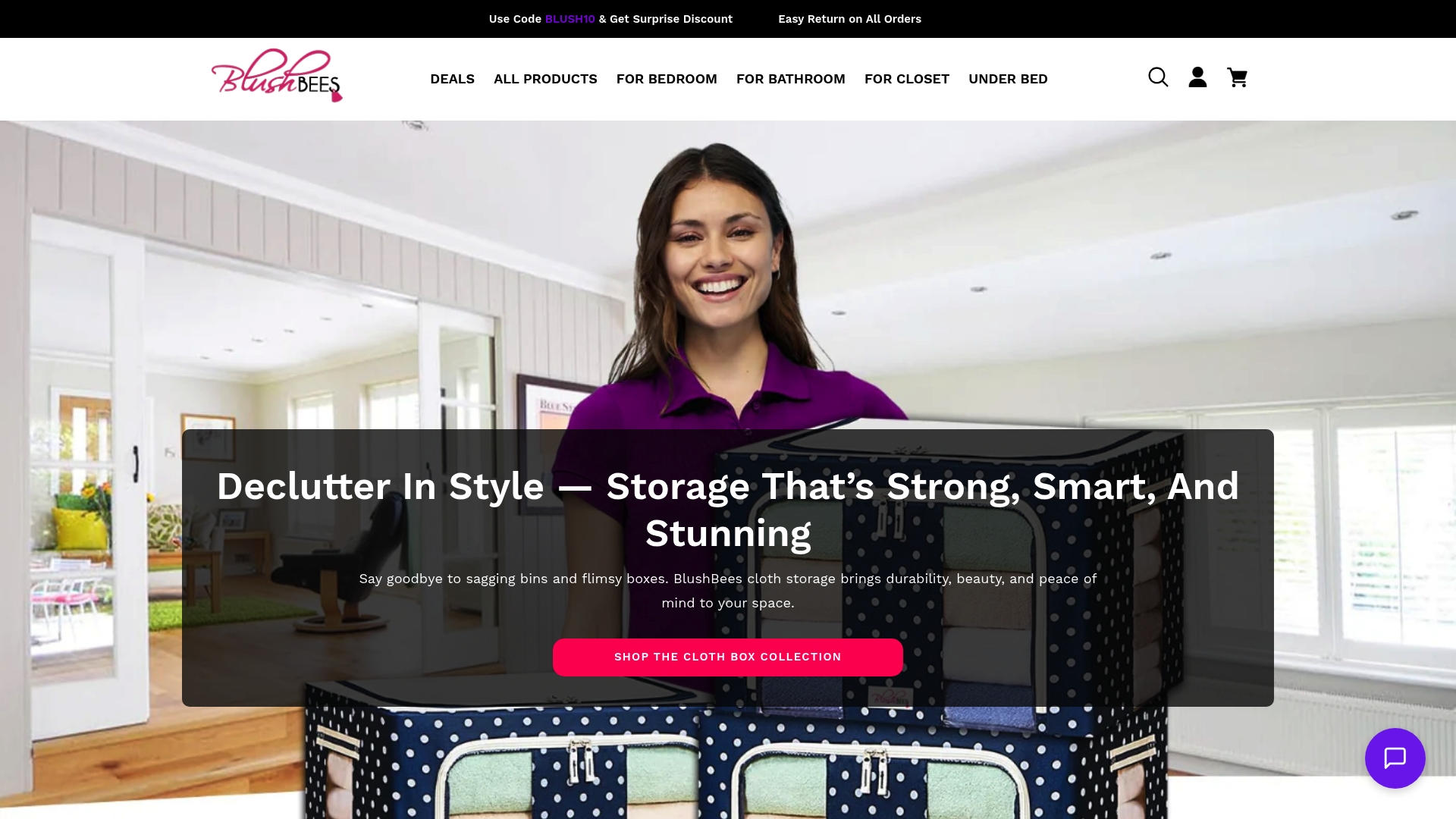
Modular storage is changing how people organize their homes by giving them flexibility that old-fashioned shelves can’t match. You might think fixed cabinets are the most space efficient option, but actually, modular systems can increase usable storage by up to 40 percent compared to traditional setups. That means your closet or kitchen can grow, shrink, or shift without a major remodel which turns everyday storage into something as adaptable as your lifestyle.
Table of Contents
- Defining Modular Storage: Key Characteristics
- The Importance of Modular Storage in Modern Homes
- How Modular Storage Systems Function and Adapt
- Exploring the Different Types of Modular Storage Solutions
- Real-World Applications: Enhancing Home Organization
Quick Summary
| Takeaway | Explanation |
|---|---|
| Modular storage adapts to changing needs. | Modular systems can be easily reconfigured to suit evolving personal or professional circumstances without significant effort. |
| Maximize space with vertical solutions. | Utilizing vertical storage allows homeowners to optimize limited space effectively, increasing usable capacity significantly. |
| Flexible storage reduces clutter. | Modular systems enable effective organization, helping to create visually appealing environments free of excess items. |
| Customization enhances user experience. | Personalizing storage configurations allows for uniquely tailored solutions that reflect individual preferences and lifestyle changes. |
| Cost-effective reconfiguration without disruptions. | Modular storage offers a financially sensible alternative to traditional built-ins by providing adaptability without major renovations. |
Defining Modular Storage: Key Characteristics
Modular storage represents a revolutionary approach to organizing spaces that offers unparalleled flexibility and customization. Unlike traditional fixed storage solutions, modular systems are designed to adapt and transform according to changing needs, making them an ideal choice for dynamic living environments.
Adaptable Design Principles
At its core, modular storage is characterized by interconnected units that can be rearranged, added, or removed with remarkable ease. These systems are engineered with standardized dimensions and connecting mechanisms that allow users to create personalized storage configurations. Explore our guide on closet organization tips to understand how modular design can revolutionize your space management.
The key design principles of modular storage include:
- Scalability: Units can be expanded or reduced based on current requirements
- Interchangeability: Components can be swapped or repositioned without complex tools
- Versatility: Applicable across different spaces like home offices, kitchens, and closets
Functional Characteristics
What distinguishes modular storage from traditional solutions is its inherent flexibility. According to architectural design research, these systems are not just about storing items but creating intelligent spaces that evolve with user needs. Each module functions as an independent unit while seamlessly integrating with others, allowing for a highly personalized organizational strategy.
The functional benefits extend beyond mere storage. Modular systems enable users to:
- Maximize vertical and horizontal space efficiently
- Create visually cohesive and aesthetically pleasing environments
- Reduce clutter and improve overall spatial organization
By embracing a modular approach, individuals can transform storage from a static necessity into a dynamic, responsive solution that grows and changes alongside their lifestyle.
The Importance of Modular Storage in Modern Homes
Modern homes demand intelligent storage solutions that can keep pace with increasingly complex and dynamic lifestyles. Modular storage has emerged as a transformative approach that addresses contemporary spatial challenges with remarkable efficiency and aesthetic appeal.
Space Optimization and Efficiency
In urban environments where living spaces are becoming progressively compact, modular storage offers a strategic solution for maximizing available square footage. Learn more about vertical storage solutions that can help you reimagine your living spaces. According to urban design research, modular systems can increase usable storage capacity by up to 40% compared to traditional fixed storage approaches.

The key advantages of modular storage for space optimization include:
- Utilizing vertical space more effectively
- Creating multi-functional storage zones
- Reducing wasted or underutilized areas within homes
Adaptability to Changing Lifestyles
Life is inherently unpredictable, and storage solutions must reflect this dynamism. Modular storage systems provide unprecedented flexibility, allowing homeowners to reconfigure their spaces as personal needs evolve. Whether accommodating a growing family, transitioning to remote work, or simply refreshing home aesthetics, these adaptable units can be seamlessly modified without significant investment or disruption.
The lifestyle benefits of modular storage are substantial:
- Supports personal and professional transitions
- Reduces need for complete furniture replacement
- Provides long term value through ongoing customization
By embracing modular storage, homeowners can create living environments that are not just functional, but truly responsive to their unique and changing requirements.
How Modular Storage Systems Function and Adapt
Modular storage systems represent a sophisticated approach to organization that goes beyond traditional storage solutions. These innovative systems are engineered with precision to provide maximum functionality and seamless adaptability across different living environments.
Structural Connectivity and Design
The fundamental mechanism of modular storage relies on standardized connection points and precision-engineered components that enable effortless reconfiguration. Explore our top closet storage ideas to understand the intricate design principles. According to material science research, these systems typically incorporate:
- Interlocking mechanisms with precise tolerances
- Universal mounting points
- Adjustable connectors that distribute weight evenly
These structural elements allow individual units to connect securely while maintaining the flexibility to be rearranged or expanded without compromising overall stability.
Adaptive Configuration Strategies
What distinguishes modular storage is its intelligent design philosophy. Each component functions as both an independent unit and a potential part of a larger, dynamic system. This approach enables users to create custom configurations that evolve with changing spatial requirements.
The adaptive strategies include:
- Vertical and horizontal expansion capabilities
- Interchangeable modules with multiple attachment points
- Scalable designs that accommodate different room dimensions
By leveraging these adaptive strategies, modular storage transcends traditional limitations, providing a responsive solution that grows and transforms alongside user needs.
The result is a storage system that is not just a static organizational tool, but a living, breathing component of modern living spaces.
Exploring the Different Types of Modular Storage Solutions
Modular storage solutions have evolved far beyond simple shelving units, offering sophisticated options that cater to diverse spatial needs and aesthetic preferences. Understanding the various types helps homeowners make informed decisions about organizing their living spaces effectively.
Residential Modular Storage Categories
Residential modular storage encompasses a wide range of specialized solutions designed for different living areas. Discover innovative under bed storage strategies that maximize often overlooked spaces. According to interior design research, the primary residential modular storage types include:
- Freestanding modular units
- Wall mounted configurable systems
- Built in adaptable compartments
- Movable cube storage structures
Each category offers unique advantages, allowing homeowners to select systems that best match their spatial constraints and organizational requirements.
This table provides an overview of the primary residential modular storage categories and specialized applications described in the article to help you differentiate their functions and uses.
| Category / Application | Description |
|---|---|
| Freestanding Modular Units | Movable units placed anywhere for adaptable storage |
| Wall Mounted Configurable Systems | Units attached to walls, easily reconfigured |
| Built In Adaptable Compartments | Integrated systems with flexible layouts |
| Movable Cube Storage Structures | Stackable cubes for versatile arrangement |
| Home Office Modular Workstations | Adjustable components for workspaces |
| Kitchen Organization Systems | Customizable racks and shelving for culinary storage |
| Closet Configurations | Multiple hanging and shelving options for clothing |
| Bathroom Storage Units | Interchangeable modules for compact bathrooms |
Specialized Modular Storage Applications
Technological integration has transformed modular storage from simple organizational tools to intelligent living systems. Modern solutions now incorporate smart features that extend beyond traditional storage concepts. These specialized applications include:
- Home office modular workstations
- Kitchen organization systems with adjustable components
- Closet configurations with multiple hanging and shelving options
- Bathroom storage units with interchangeable modules
By providing flexible, customizable solutions, these modular storage systems address the complex spatial challenges of contemporary living environments. The ability to reconfigure, expand, and adapt ensures that storage solutions remain relevant and functional as personal needs continuously evolve.
Real-World Applications: Enhancing Home Organization
Modular storage solutions transform theoretical design concepts into practical, everyday organizational strategies that address real household challenges. By providing intelligent and adaptable systems, these innovative approaches help individuals create more efficient and harmonious living environments.
Strategic Spatial Optimization
In contemporary homes where space is increasingly precious, modular storage delivers targeted solutions for maximizing available square footage. Discover our comprehensive home organization tips to understand strategic placement techniques. According to home design research, effective modular storage applications include:
- Kitchen pantry configurations with adjustable shelving
- Bedroom closet systems with interchangeable components
- Home office setups with scalable organizational units
- Garage storage solutions with flexible mounting options
These strategic approaches enable homeowners to create customized storage environments that adapt to changing lifestyle requirements.
Lifestyle Flexibility and Personal Adaptation
Dynamic living demands dynamic storage. Modular systems excel at providing solutions that grow and transform alongside personal needs. Whether accommodating a growing family, transitioning to remote work, or exploring new hobbies, these storage solutions offer unprecedented flexibility.
Key lifestyle benefits include:
- Seamless reconfiguration without major renovations
- Cost effective alternative to traditional built in storage
- Personalized organization that reflects individual preferences
- Minimal disruption during spatial transformations
By embracing modular storage, individuals can create living spaces that are not just organized, but truly responsive to their evolving personal and professional landscapes.

Embrace the Power of Modular Storage in Your Home
Struggling with clutter and constantly changing storage needs can be overwhelming, especially when your space is limited and your lifestyle keeps evolving. Modular storage isn’t just a trend—it’s the flexible, personalized solution that grows with you. From smart bedroom storage options that maximize every inch to streamlined underbed storage for those hard-to-reach spaces, your home deserves to be as adaptable as you are. Discover our Bedroom Storage collection and see how our products address the challenges of dynamic living environments highlighted in the article above.

Ready to experience the ease of tailored home organization? Explore how our bestsellers and exclusive deals can help you transform your space—visit https://blushbees.us now or shop our latest Deal Of The Week for instant savings. Upgrade your home organization today and create a space built for your life’s changes.
Frequently Asked Questions
What are the key characteristics of modular storage?
Modular storage is characterized by adaptable design principles that include scalability, interchangeability, and versatility, allowing users to create personalized configurations that evolve with their needs.
How does modular storage differ from traditional storage solutions?
Unlike traditional storage, which is typically fixed and rigid, modular storage offers flexible and dynamic options that can be rearranged, expanded, or modified based on changing requirements and preferences.
What are some benefits of using modular storage in modern homes?
Modular storage helps maximize space efficiency, supports adaptability to changing lifestyles, and provides the ability to create visually cohesive environments while reducing clutter.
How can I effectively utilize modular storage systems?
To effectively utilize modular storage systems, consider your space’s unique dimensions, establish multi-functional zones, and implement vertical storage solutions to optimize both functionality and aesthetics.
Recommended
- Closet Organization Tips 2025: Stylish & Easy Solutions – BLUSHBEES USA
- Top Closet Storage Ideas for Stylish Homes in 2025 – BLUSHBEES USA
- Vertical Storage Solutions 2025: Stylish Ideas for Busy Homes – BLUSHBEES USA
- Maximize Space and Declutter with Collapsible Storage Boxes: The Ultim – BLUSHBEES USA



